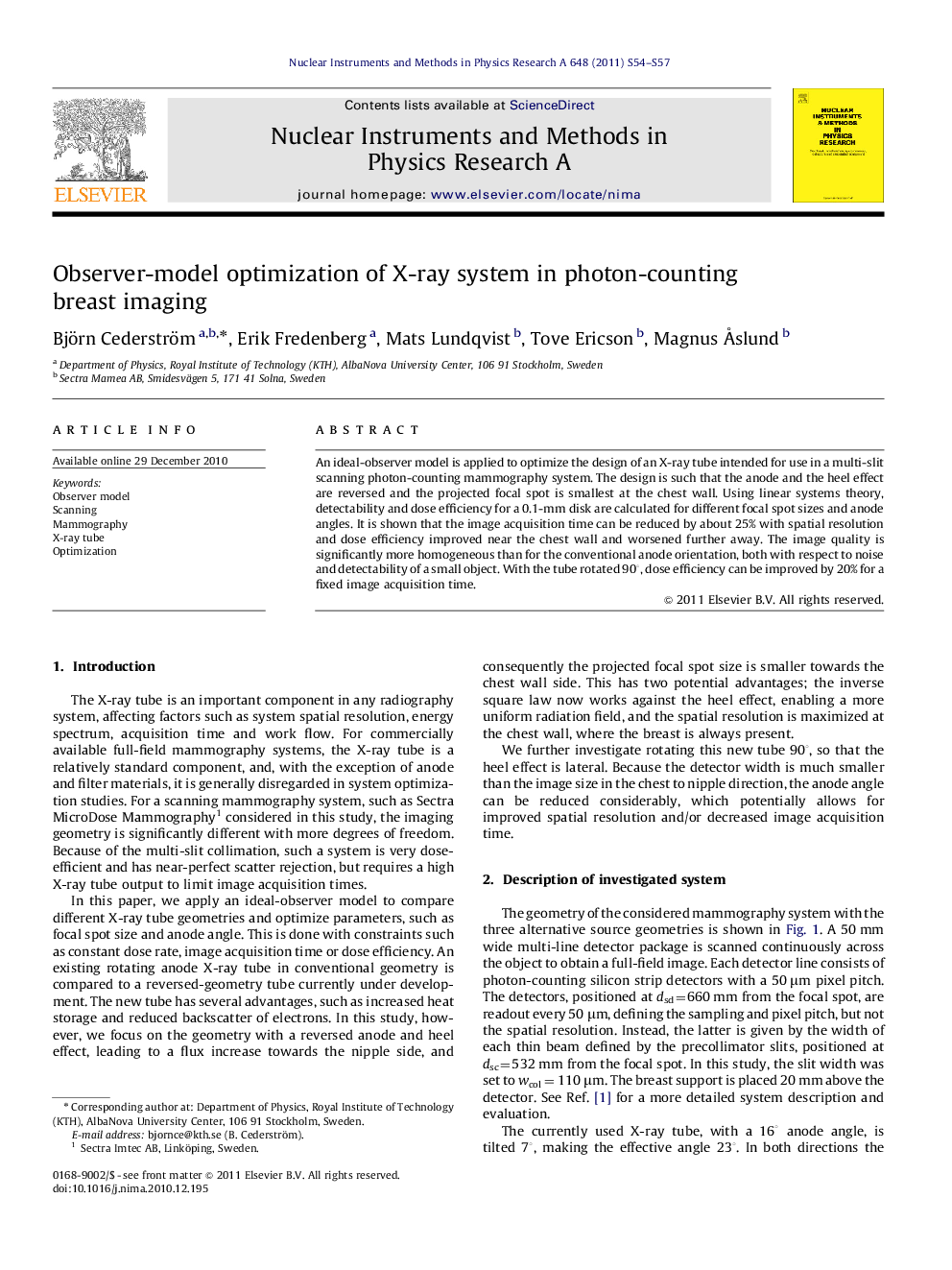| Article ID | Journal | Published Year | Pages | File Type |
|---|---|---|---|---|
| 1824776 | Nuclear Instruments and Methods in Physics Research Section A: Accelerators, Spectrometers, Detectors and Associated Equipment | 2011 | 4 Pages |
Abstract
An ideal-observer model is applied to optimize the design of an X-ray tube intended for use in a multi-slit scanning photon-counting mammography system. The design is such that the anode and the heel effect are reversed and the projected focal spot is smallest at the chest wall. Using linear systems theory, detectability and dose efficiency for a 0.1-mm disk are calculated for different focal spot sizes and anode angles. It is shown that the image acquisition time can be reduced by about 25% with spatial resolution and dose efficiency improved near the chest wall and worsened further away. The image quality is significantly more homogeneous than for the conventional anode orientation, both with respect to noise and detectability of a small object. With the tube rotated 90â, dose efficiency can be improved by 20% for a fixed image acquisition time.
Related Topics
Physical Sciences and Engineering
Physics and Astronomy
Instrumentation
Authors
Björn Cederström, Erik Fredenberg, Mats Lundqvist, Tove Ericson, Magnus Ã
slund,
